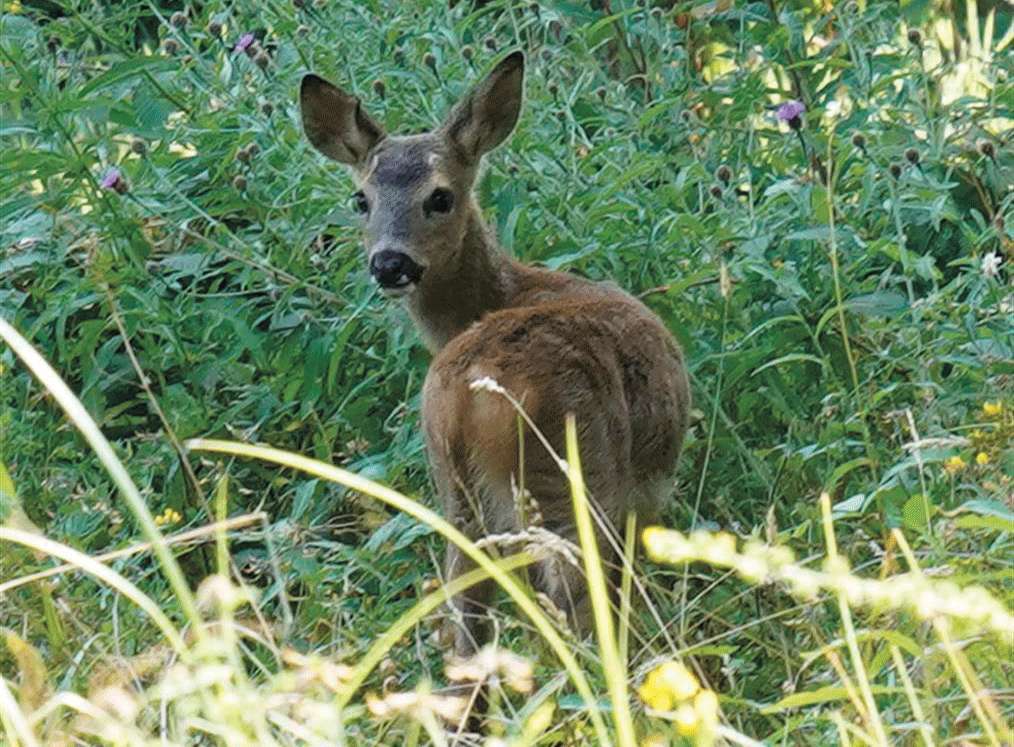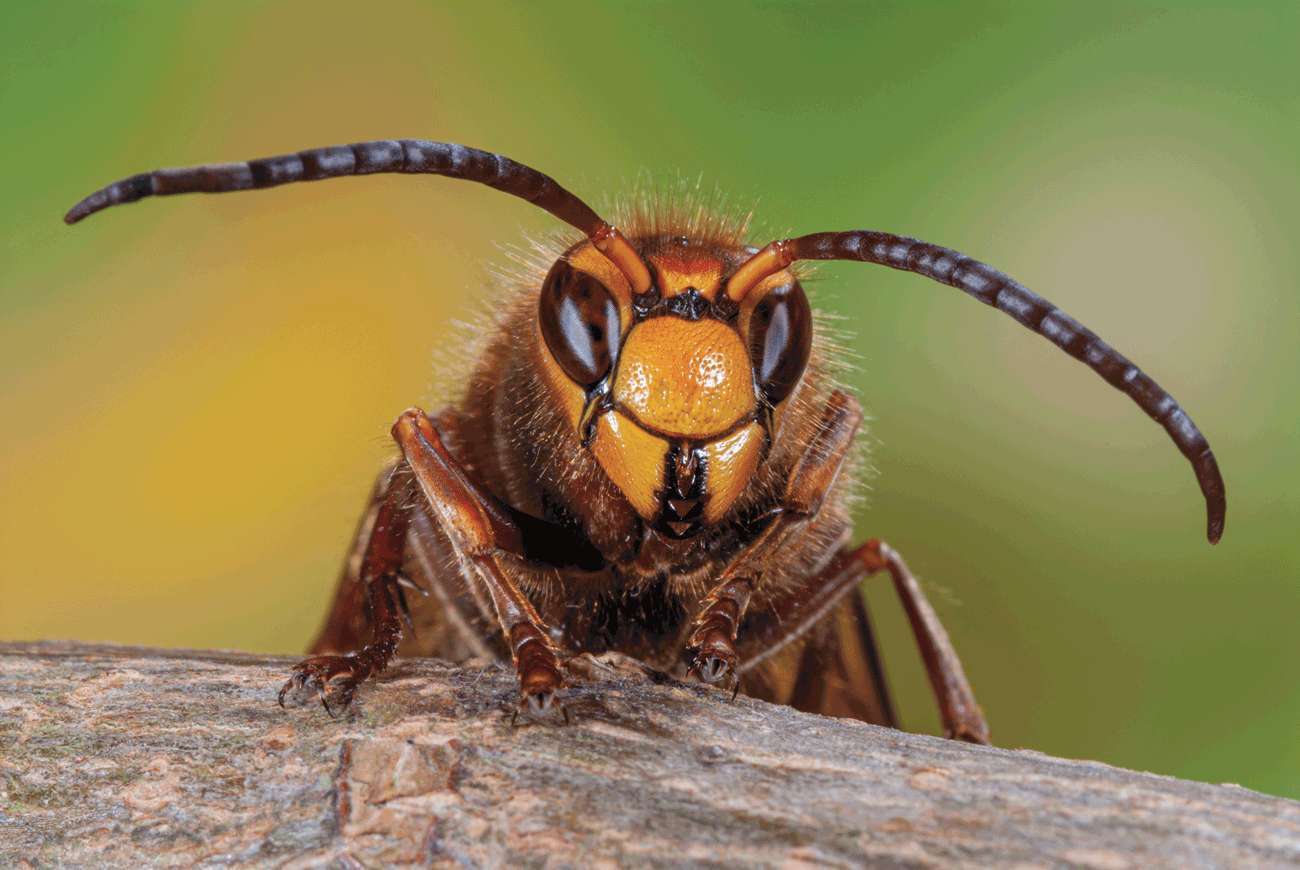
by Miki Marks
One of Nature’s life-and-death dramas played itself out in our conservatory the other day. First, there was a loud buzzing noise and on looking up we saw a large insect – wasp-like but bigger. It settled on one of the glazing bars – and we were able to see that it had very long, articulated legs and a yellow and dark brown striped abdomen. Not a wasp, but a hornet.
I was just about to get out my ‘rescue kit’ which consists of a glass tumbler and a stiff cardboard postcard when we saw, intrigued and a little horrified, a spider appearing. It was a third of the size of the hornet and moved with amazing speed and efficiency and spun its thread all round the hornet’s long brown legs, immobilizing it. The hornet wiggled and struggled desperately, and despite being a most successful predator, on this occasion was the loser.
We do not interfere when things get to this stage, and soon the hornet was dead. Next morning I prised it out of its sticky cobweb shroud to get a closer look. I had read reports, and warnings about increasingly frequent sightings of the Asian Hornet. Dubbed ‘the Killer Hornet’ for the way it attacks beehives, and causes significant loses. It is thought it was inadvertently imported from China in a box of pottery and is spreading successfully in southern and western England – and if you come across one, you need to report it.
How to tell the difference? The Asian hornet is smaller than the European one – but its legs are yellow, not brown. Only the 4th segment of the abdomen is dark yellow, and it has a black head and a yellow face. The abdomen of a European hornet is a stripy black and yellow.
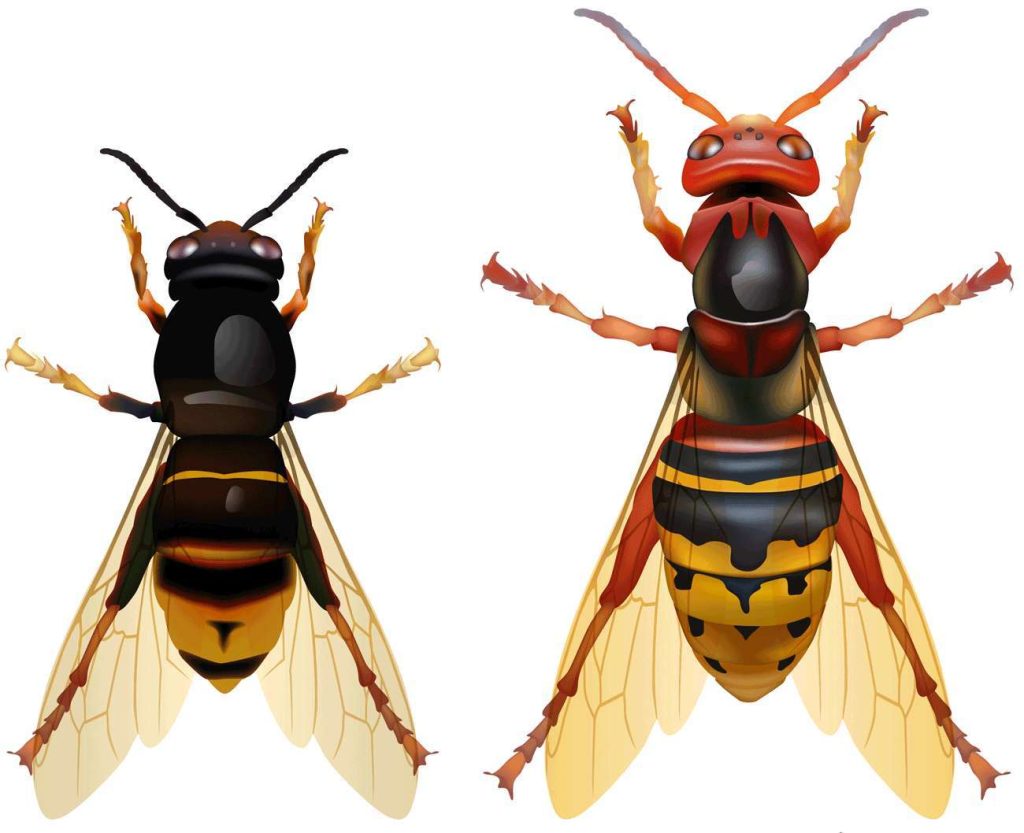
When I looked again at the web that spider had woven to trap the hornet, I wondered how it was that it avoided trapping itself. It had created in such a short time a dense, enwrapping film. My nature books could not help with this – so I Googled it and found under ‘Questions people often ask’ that I was not the first to wonder how spiders avoid being caught up in their webs.
Unlike prey which blunder into webs and then struggle, getting even more entangled, spiders move nimbly with only the hair at the tips of their legs making contact with the sticky silk. The tips of the legs have a non-stick coating, just in case, and not all strands of the cobweb are sticky. The spider puts droplets of glue on selected threads and leaves itself a clear pathway.
The Latin name for hornet is Vespa. Perhaps you remember those charismatic little scooters made in Italy called vespas? Vespa is wasp in Italian – but the idea is the same; naming the machine after a loudly buzzing insect. I was interested to read that the scooters were made from actual pieces of landing gear from Mussolini’s planes. Just shows where a search on Google can lead!
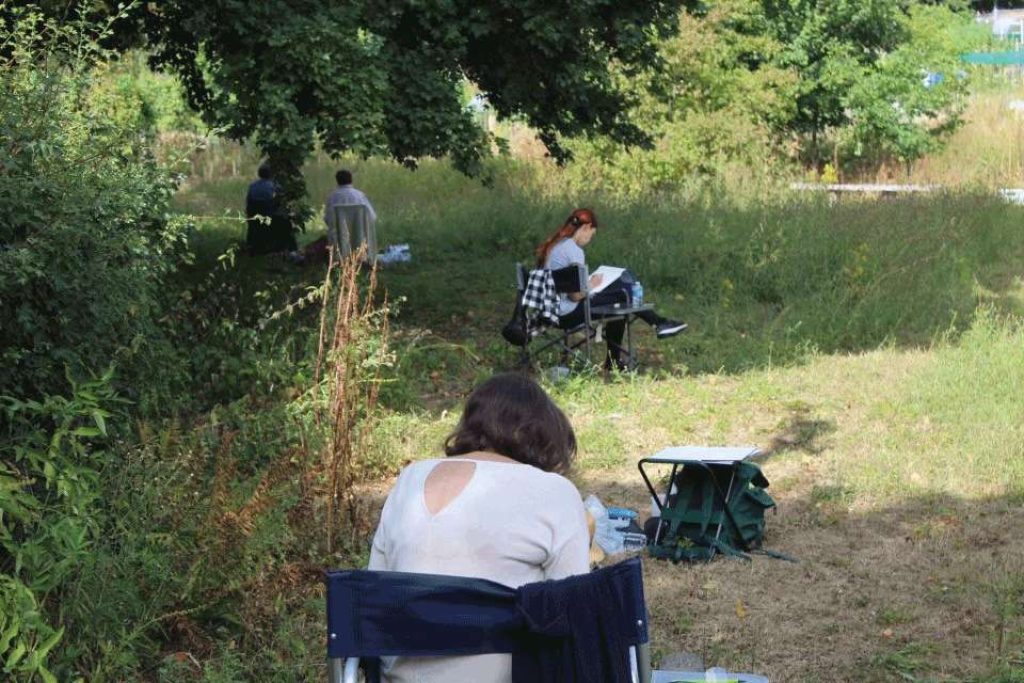
Gordon Harvey gave Cranleigh two fields in memory of his wife. Part of these fields are where we have our conservation site. He wanted his gift to be used and enjoyed by all.
He would have been very pleased, I think, to see members of the Cranleigh Arts and Crafts Society setting up their easels, getting out their materials and spending some happy hours on the site. It would be wonderful if this became a regular event, and to have a painted record of the seasonal changes on Beryl Harvey Fields, in addition to our collection of beautiful photographs.
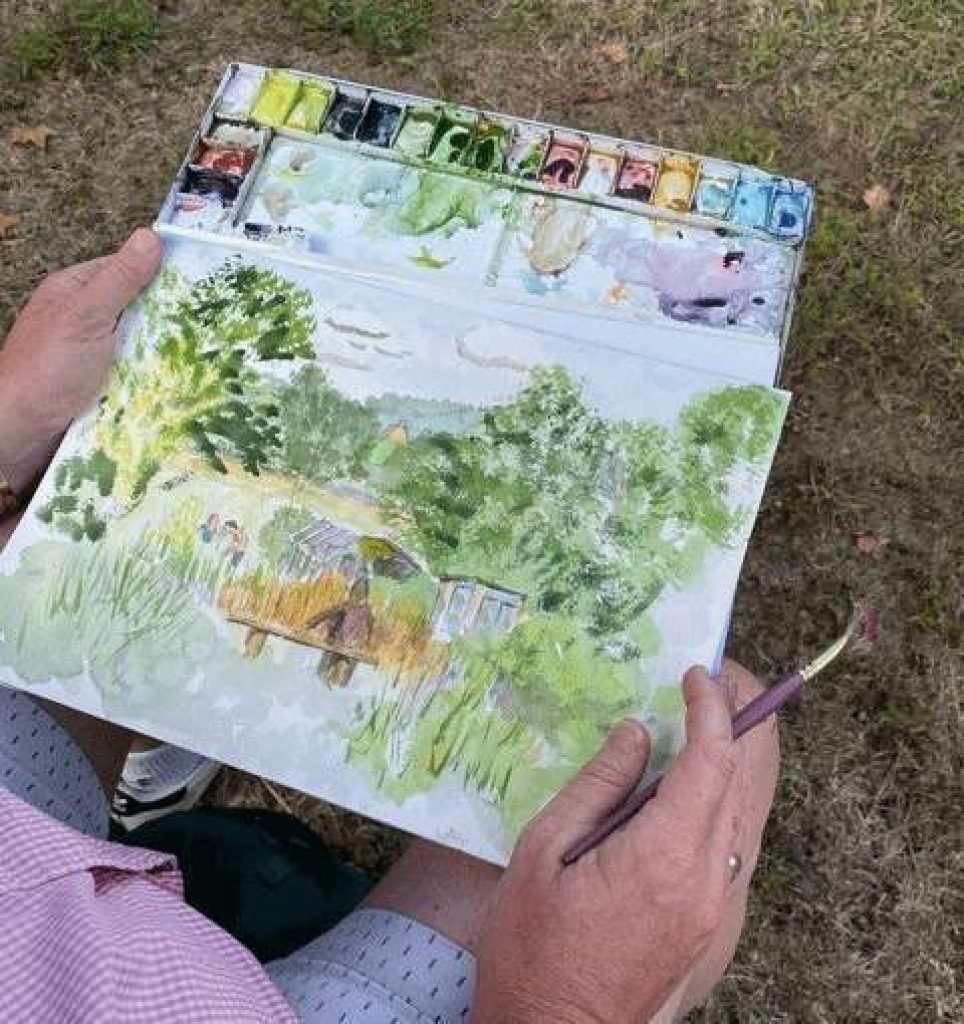
This hot, dry summer brought increasing incidences of wildfires to this country. Most wildfires are started by people, usually accidentally – portable barbecues being one of the main culprits. Research has shown that in Spain and Portugal large scale abandonment of farmland with no livestock to control the resulting bushes and undergrowth has contributed significantly to the spread of fires.
It is possibly that climate change and the trend to re-wilding, which leaves tracts of land with as little management as possible, will result in this country being more fire-prone. Environmental issues are never simple – beware anyone who thinks that they are!
Beryl Harvey Fields is Cranleigh’s nature conservation site. We need volunteers.
For further information: visit our conservation site in Cranleigh – or better, volunteer. Contact Philip Townsend at: for details






